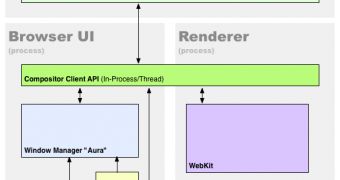Google Chrome has benefited greatly from being well designed from the start. It used custom UI elements, making it easier to port to other platforms, it was built with a multi-process architecture in mind, it sandboxed tabs, extensions, plugins and so on.
All of these original software design decision paid off in that, after launching the first Chrome, the work was focused on bringing new features, enhancing functionality, speeding up the browser and so on.
Large architectural changes were not needed, even for the Chrome OS project. But Chrome is several years old now and it's beginning to show its age.
One thing that has become increasingly problematic for Chrome developers is the reliance on native APIs and libraries, on Windows, Mac and Linux, intertwined with cross-platform Chrome code.
Recently, developers realized that this has become an issue and that it was beginning to hold the project back.
So work got underway on a huge undertaking, writing a completely new, completely platform-independent, framework for Chrome UI.
Dubbed Aura, the project is quite ambitious, Google plans to build a dedicated window manager, dedicated UI elements and so on, that will work on all platforms and will rely very little on native libraries.
The main goal is to diminish reliance on Windows APIs and GTK. Because Chrome was originally developed for Windows, a lot of, what Google developers call, Win32-isms, creeped in.
The big reason behind wanting to get rid of platform dependencies is hardware acceleration of the UI elements, something not possible with the current code.
Aura will enable Google to accelerate the drawing of the UI, along with the actual web content, for better performance and much better animations and effects for the user interface.
There are many components to the Aura project, the details of which only interest developers.
What users should take out of this is the fact that Chrome will, eventually since Aura is still early stage, have a fully hardware accelerated and platform-independent UI which will allow Google to take a lot more liberties with it and create much more visually impressive effects and animations.
Aura source code is available for adventurous and curious developers, but users will have to wait before they start seeing any improvements in Chrome or Chromium. In the meantime, perhaps the videos put together by developer and Chrome fan François Beaufort will wet your appetite.
Chromium with the Aura shell enabled
Chromium with Aura showing off the translucent windows and window manager effects

 14 DAY TRIAL //
14 DAY TRIAL // 
